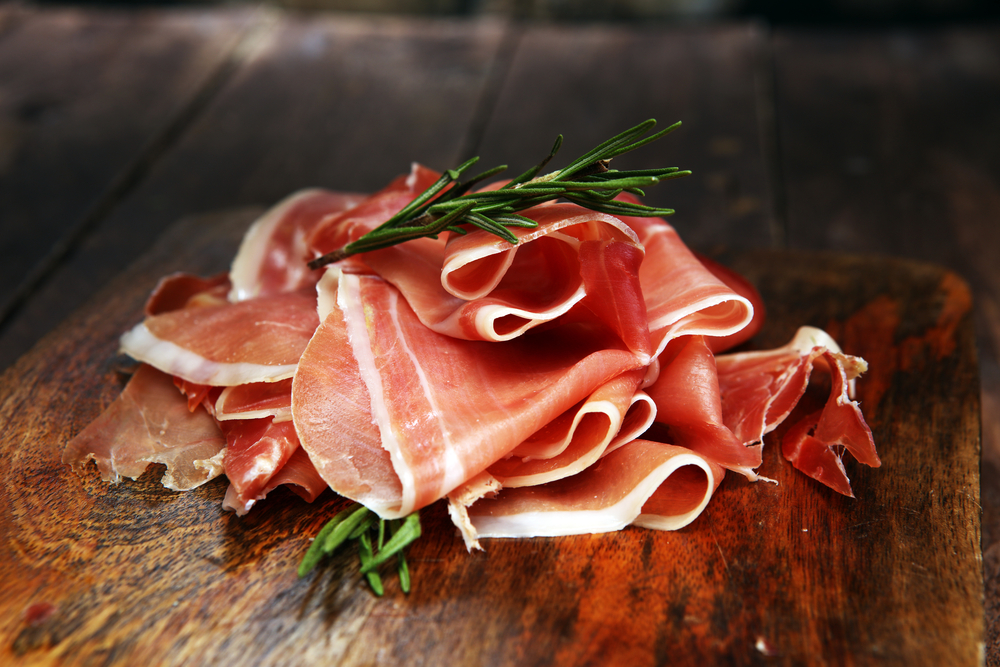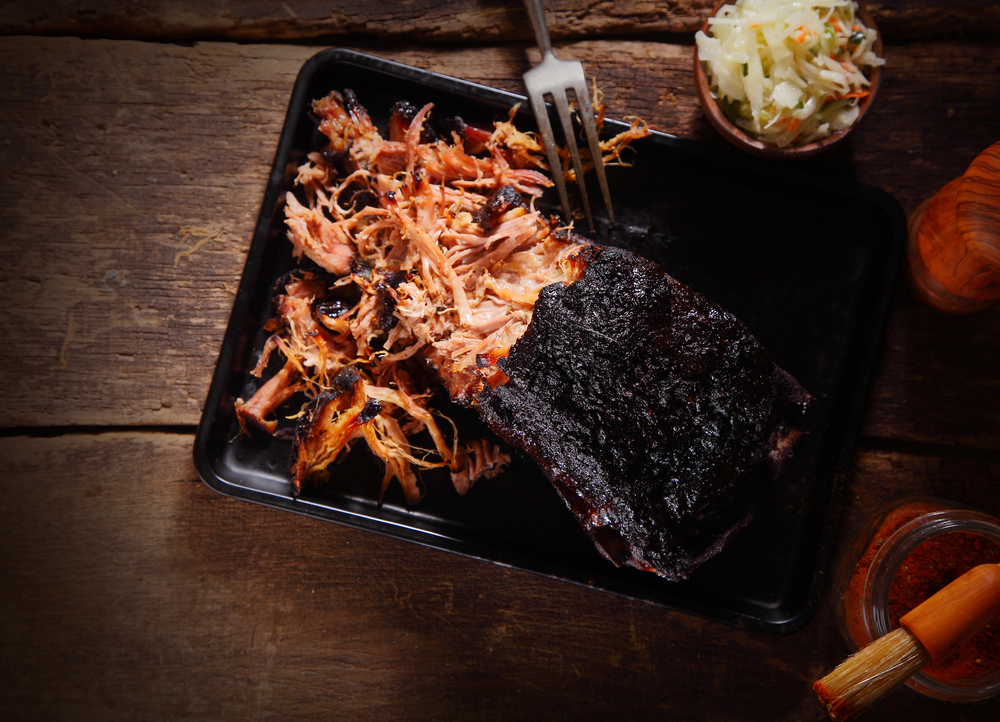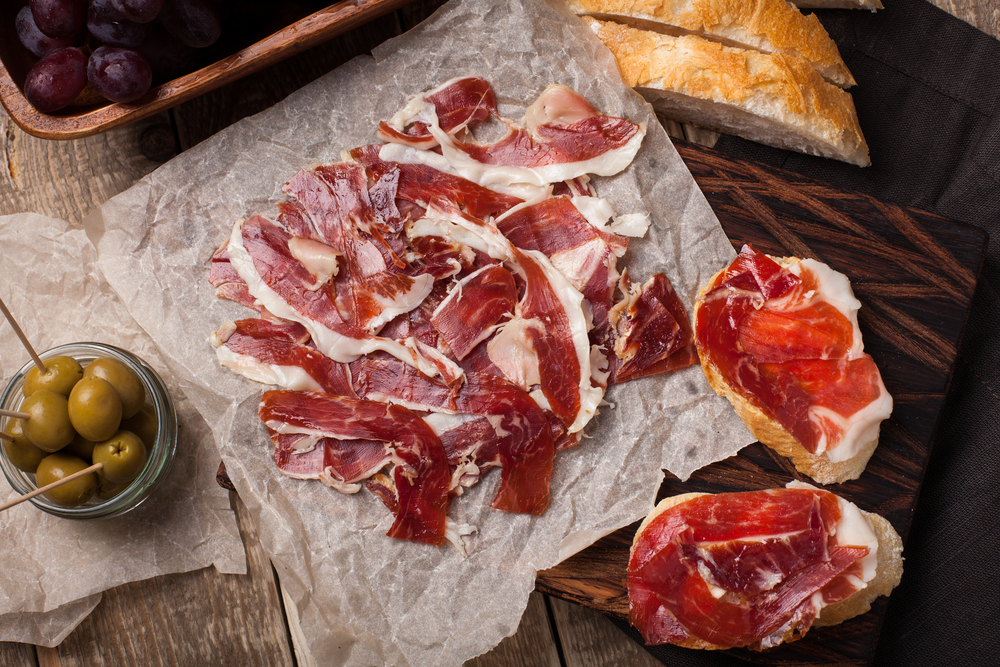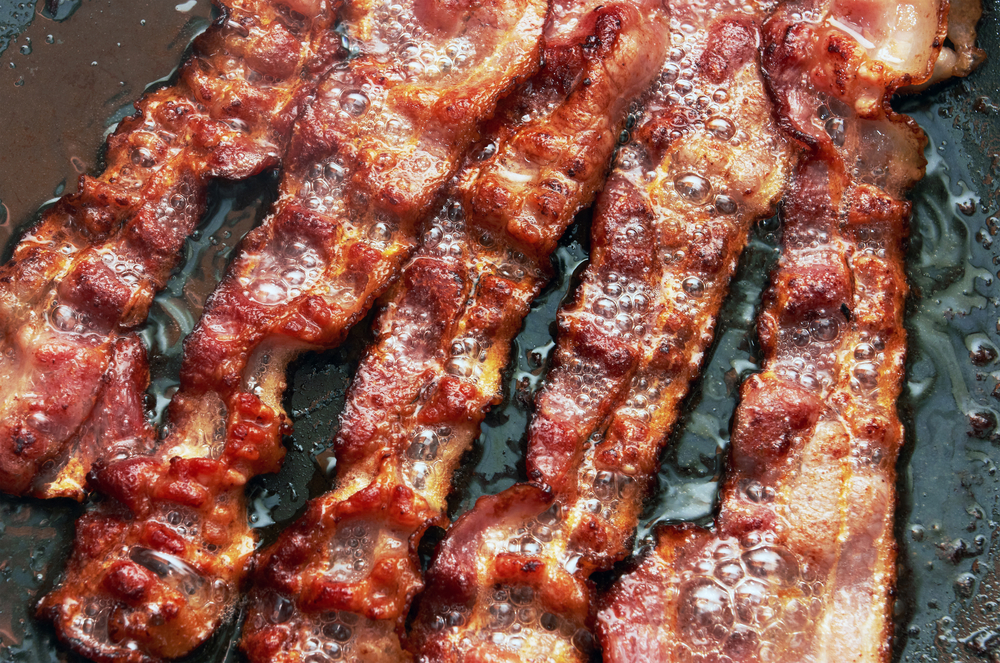When it comes to meat, pork is a popular choice for many dishes. However, there is often confusion when it comes to ham and pork.
Are they the same thing? What are the differences between them? In this article, I will provide a comprehensive guide to understanding ham and pork.
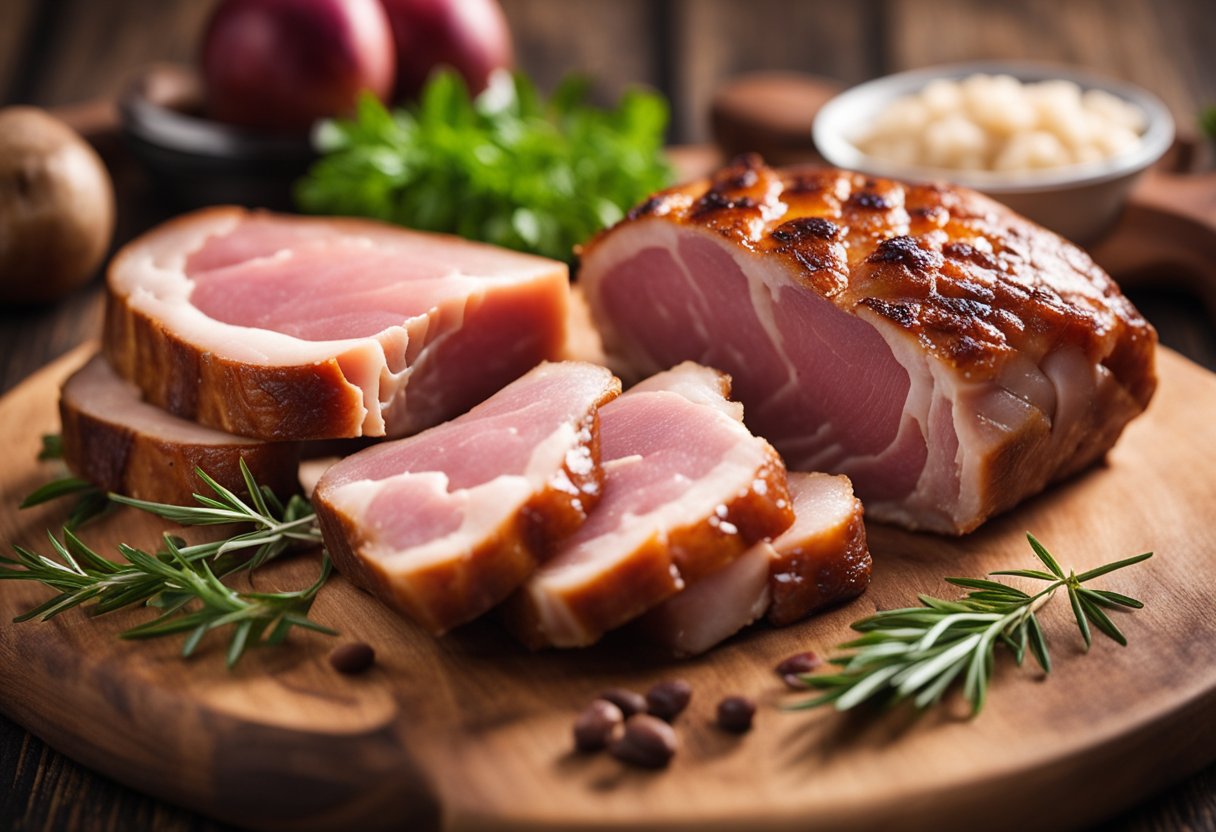
Pork is a type of meat that comes from domesticated pigs. It is a versatile meat that can be used in a variety of dishes, from bacon for breakfast to pulled pork for dinner.
Ham, on the other hand, is a specific cut of pork that comes from the pig’s hind leg. It is always cured, which gives it a distinctive dark pink color.
While all ham is pork, not all pork is ham. Understanding the differences between these two meats is important for cooking and choosing the right cut for your dish.
Key Takeaways
- Pork is a versatile meat that can be used in various dishes, while ham is a specific cut of pork from the pig’s hind leg that is always cured.
- The curing process gives ham a distinct flavor profile and color that sets it apart from other cuts of pork.
- Knowing the differences between ham and pork is crucial for cooking and choosing the right cut for your dish.
Understanding Ham and Pork
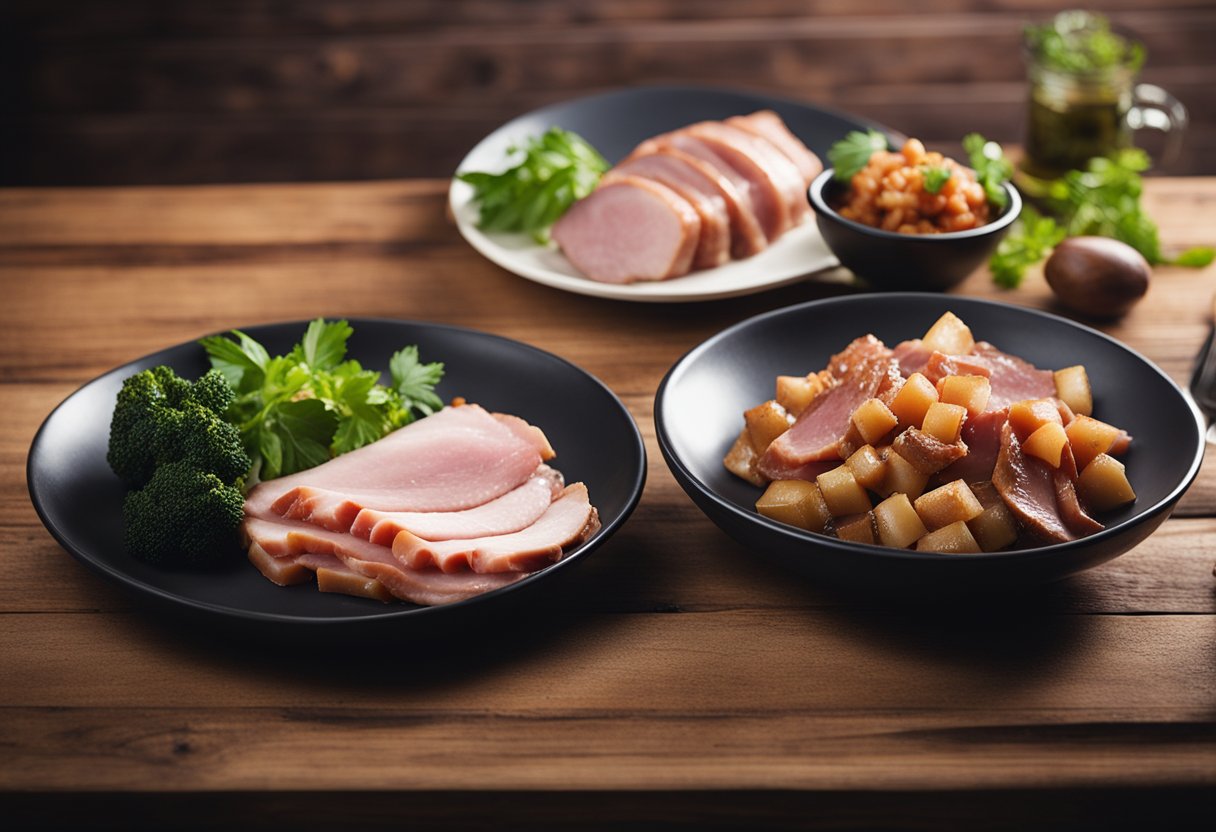
As a meat lover, I’ve always been curious about the difference between ham and pork. After some research, I’ve come to understand that while both come from the domesticated pig, they are different cuts of meat.
Pork can refer to any meat that comes from a pig, including cuts like shoulder, loin, and belly. It is a versatile meat that can be cooked in many different ways, such as roasting, grilling, or frying.
Pork is also a good source of protein and nutrients like zinc and vitamin B12.
Ham, on the other hand, is a specific cut of pork that comes from the pig’s hind leg. It is often cured, meaning that the flesh is preserved through smoking, wet-curing, or dry-brining.
This process gives ham its distinct flavor and texture. While ham can be eaten cold, it often tastes better when heated through.
It’s important to note that not all products labeled as “ham” are actual ham. In the United States, for example, cured pork shoulders may be labeled as “ham.” However, true ham comes from the pig’s hind leg.
When it comes to nutrition, ham and pork have similar nutritional profiles. Both are good sources of protein, vitamins, and minerals.
However, cured ham can be high in sodium and preservatives, so it’s important to consume it in moderation.
In summary, while ham and pork come from the same animal, they are different cuts of meat with distinct flavors and textures.
Pork is a versatile meat that can be cooked in many different ways, while ham is a specific cut that is often cured for added flavor.
Curing Process
As a barbecue enthusiast, I know that the curing process is an essential step in the preparation of ham and pork.
Curing is a process of preserving meat through the use of salt, nitrates, and other curing agents. The curing process not only preserves the meat but also adds flavor, texture, and color to it.
Curing Ham
Curing ham is a time-honored tradition that has been passed down for generations. To cure ham, the meat is first rubbed with a mixture of salt, sugar, and other spices.
The ham is then left to cure for several days, during which time the salt and other curing agents penetrate the meat.
This process helps to preserve the ham and gives it a distinct flavor and texture.
One of the most common curing agents used in ham is sodium nitrate. Sodium nitrate is a salt that is used to preserve meat and prevent the growth of harmful bacteria.
It also helps to give ham its characteristic pink color. However, there is some concern about the use of sodium nitrate in cured meats, as it has been linked to an increased risk of certain types of cancer.
Curing Pork
Curing pork is similar to curing ham, but the process is usually shorter. To cure pork, the meat is first rubbed with a mixture of salt, sugar, and other spices.
The pork is then left to cure for several hours or overnight, depending on the size of the meat.
Unlike ham, cured pork is not usually smoked. Instead, it is often cooked in a variety of ways, including roasting, grilling, or frying.
Cured pork is a popular ingredient in many dishes, including bacon, sausage, and ham hocks.
It is important to note that not all cured meats are created equal. While some cured meats are high in sodium and other preservatives, others are cured using natural methods.
When purchasing cured meats, it is important to read the label and choose products that are low in sodium and other additives.
In conclusion, the curing process is an essential step in the preparation of ham and pork. Curing helps to preserve the meat, add flavor and texture, and give it a distinct color.
While there is some concern about the use of sodium nitrate in cured meats, it is still a common curing agent used in ham.
When purchasing cured meats, it is important to read the label and choose products that are low in sodium and other additives.
Flavor Profiles
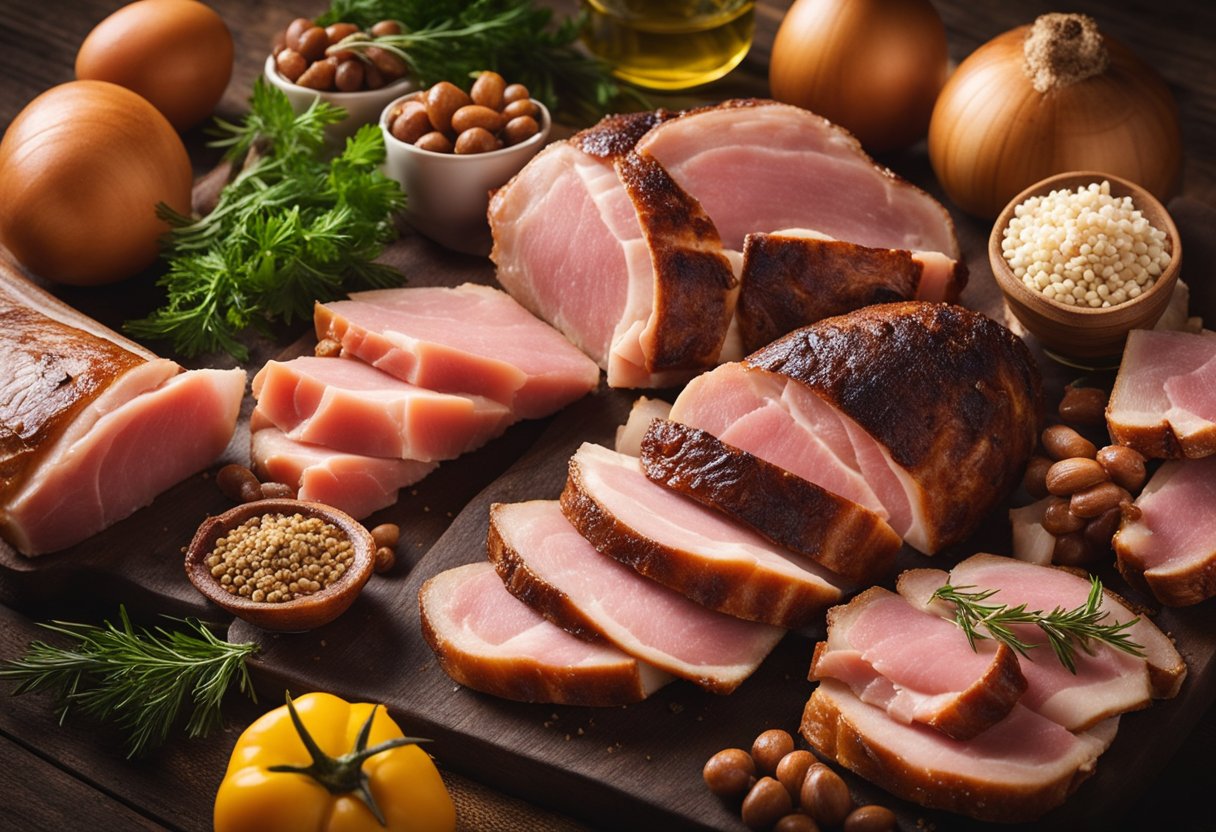
Ham Flavor
Ham has a distinct flavor that is hard to miss. The curing process gives ham a unique taste that is rich and bold.
The flavor of ham is often described as salty, smoky, and savory. It is also slightly sweet, which is due to the sugar used in the curing process.
When it comes to seasoning ham, it is important to keep in mind that ham is already a flavorful meat. It does not require a lot of additional seasoning, as it can overpower the natural taste of the ham.
However, a simple glaze or rub can enhance the flavor of the ham without overpowering it.
Pork Flavor
Pork has a more delicate and mild flavor compared to ham. The flavor of pork is often described as sweet and nutty, with a slightly gamey taste.
Pork requires the help of spices and seasonings to elevate its taste, as it can be bland on its own.
When it comes to seasoning pork, there are many options to choose from. Some popular seasonings for pork include garlic, rosemary, thyme, and sage.
These seasonings can enhance the natural flavor of the pork without overpowering it.
Overall, the flavor profiles of ham and pork are very different.
Ham has a bold and rich taste, while pork has a delicate and mild flavor. It is important to keep this in mind when choosing which meat to use in a recipe.
Different Cuts
When it comes to meat, understanding the different cuts is essential to ensure that you get the best results in your cooking.
In this section, I will discuss the different cuts of ham and pork and their unique characteristics.
Ham Cuts
Ham is a popular cut of pork that is often served during special occasions and holidays. It is a versatile cut that can be used in a variety of dishes, from sandwiches to soups.
Here are some of the most common ham cuts:
- Whole Ham – This is the entire ham leg, and it can be either bone-in or boneless. Whole hams are often sold cured and smoked.
- Ham Steak – This is a thick slice of ham that is cut from the center of the ham. It is often served as a breakfast meat.
- Ham Hock – This is the lower part of the ham leg, and it is often used to flavor soups and stews.
Pork Cuts
Pork is a versatile meat that can be used in a variety of dishes. Understanding the different pork cuts can help you choose the right cut for your recipe. Here are some of the most common pork cuts:
- Pork Loin – This is a lean cut of pork that is often used for roasts and chops. It is located along the back of the pig and is known for its tenderness.
- Pork Chops – These are thin slices of pork that are cut from the loin. They can be bone-in or boneless and are often grilled or pan-fried.
- Pork Tenderloin – This is a long, thin cut of pork that is located near the loin. It is known for its tenderness and is often roasted or grilled.
- Pork Butt – This is a cut of pork that comes from the upper part of the shoulder. It is often used for pulled pork and is known for its rich flavor.
- Pork Shoulder – This is a cut of pork that comes from the lower part of the shoulder. It is often used for roasts and stews.
When selecting pork cuts, it is important to consider the level of fat and the cooking method.
For example, cuts with more fat are often better for slow cooking methods, while leaner cuts are better for quick cooking methods.
Cooking and Preparation
Cooking Ham
Ham is a versatile meat that can be cooked in a variety of ways. It can be cooked raw or smoked, and it can be preserved for extended shelf life.
The most popular way to cook ham is to roast it, but it can also be baked, boiled, or grilled.
When cooking ham, it is important to consider the cut of meat and the desired outcome. For example, a bone-in ham will take longer to cook than a boneless ham.
A smoked ham will have a stronger flavor than a raw ham.
To prepare a ham for cooking, it is important to remove the skin and excess fat. This will help the ham cook evenly and prevent it from becoming too greasy.
Cooking Pork
Pork is a versatile meat that can be cooked in many different ways. It can be used to make dishes such as pulled pork, schnitzel, sausages, and bacon. It can be grilled, roasted, fried, or smoked.
When cooking pork, it is important to consider the cut of meat and the desired outcome. For example, a pork loin will cook faster than a pork shoulder. A thick cut of pork will require a longer cooking time than a thin cut.
To prepare pork for cooking, it is important to trim excess fat and remove any bones. This will help the pork cook evenly and prevent it from becoming too greasy.
When grilling pork, it is important to marinate the meat beforehand to add flavor and prevent it from drying out. When roasting pork, it is important to baste the meat regularly to keep it moist.
Overall, ham and pork are both versatile meats that can be cooked in a variety of ways.
Whether you are preparing a dish for a special occasion or a weeknight dinner, there are many delicious recipes and cooking methods to choose from.
Health and Nutrition
Ham Nutrition
Ham is a popular type of pork that is typically cured and smoked. It is a good source of protein, which is essential for building and repairing tissues in the body.
A 3-ounce serving of ham contains approximately 11 grams of protein. However, ham is also high in sodium, with a 3-ounce serving containing 26% of the daily value (DV).
High sodium intake is linked to high blood pressure, which increases the risk of heart disease and stroke. Therefore, it is important to consume ham in moderation.
Ham is also high in fat, with a 3-ounce serving containing approximately 7 grams of fat. However, not all fats are bad for you.
Ham contains both saturated and unsaturated fats. Saturated fats can raise cholesterol levels and increase the risk of heart disease, while unsaturated fats can help lower cholesterol levels and reduce the risk of heart disease.
Pork Nutrition
Pork is a versatile type of meat that can be cooked in a variety of ways. It is also a good source of protein, with a 3-ounce serving of pork containing approximately 22 grams of protein.
Pork is also rich in essential minerals such as iron and zinc, which are important for maintaining good health.
However, pork is also high in fat, with a 3-ounce serving containing approximately 8 grams of fat. Like ham, pork contains both saturated and unsaturated fats.
It is important to choose lean cuts of pork and to consume pork in moderation to maintain a healthy diet.
In summary, ham and pork are both good sources of protein and essential minerals. However, they are also high in sodium and fat, so it is important to consume them in moderation as part of a balanced diet.
Choosing lean cuts of pork and limiting your intake of processed meats like ham can help reduce your risk of heart disease and other health problems.
Storage and Shelf Life
When it comes to storage and shelf life, pork and ham have some differences. Pork can be stored in the refrigerator for up to five days, while ham can last up to seven days.
However, it’s important to note that these storage times may vary depending on the type of pork or ham.
If you want to extend the shelf life of pork or ham, you can freeze it. Pork can be frozen for up to six months, while ham can last up to two months in the freezer.
When freezing pork or ham, it’s important to wrap it tightly in plastic wrap or aluminum foil to prevent freezer burn.
It’s also important to note that the storage times for pork and ham may vary depending on how they are prepared. For example, cooked pork or ham may have a shorter shelf life than raw pork or ham.
Additionally, if pork or ham is left out at room temperature for more than two hours, it should be discarded to prevent foodborne illness.
Overall, it’s important to properly store and handle pork and ham to ensure their safety and quality.
By following proper storage guidelines and using freezer storage when necessary, you can enjoy delicious pork and ham dishes for longer periods of time.
Cultural and Religious Considerations
When it comes to choosing between ham and pork, cultural and religious considerations can play a significant role in the decision-making process.
Different cultures and religions have varying beliefs and practices regarding the consumption of pork meat.
For example, in some Christian cultures, ham is a traditional dish served during holidays such as Christmas and Easter.
However, in Islamic culture, the consumption of pork is strictly prohibited. Muslims are required to follow a halal diet, which forbids the consumption of pork and other forbidden foods.
In addition, during Thanksgiving in the United States, turkey is typically the centerpiece of the meal, rather than ham or pork.
This cultural tradition is deeply ingrained in American society and has been passed down from generation to generation.
It is important to note that cultural and religious beliefs should be respected and taken into consideration when making food choices.
For those who follow religious dietary restrictions, there are alternative options available. For example, in place of pork, Muslims can consume halal meat, which is prepared according to Islamic dietary laws.
In conclusion, cultural and religious considerations play a significant role in the consumption of pork and ham.
It is important to respect and understand these beliefs and practices, and to make informed decisions based on personal beliefs and values.
Comparing Ham and Pork
As a meat lover, I often find myself wondering about the differences between ham and pork. While both come from pigs, there are some key distinctions that set them apart.
Firstly, ham is a specific cut of pork that comes from the hind leg of the pig. Pork, on the other hand, refers to any cut of meat from the pig. This means that while all ham is pork, not all pork is ham.
Ham is typically cured, which means that it is preserved through smoking, wet-curing, or dry-brining. This process gives ham a distinct flavor and texture that sets it apart from other pork products.
Additionally, ham does not need to be cooked before consumption, although it often tastes better when heated through.
In terms of nutrition, there are some differences between ham and pork. While both are good sources of protein, ham tends to be higher in sodium due to the curing process.
On the other hand, some cuts of pork can be higher in fat and calories than ham.
When it comes to cooking, ham and pork can be used in a variety of ways. Ham is often served as a standalone dish, while pork can be used in stews, roasts, and other recipes.
Additionally, ham is often served cold, while pork is typically cooked and served hot.
Overall, while ham and pork have some similarities, there are also some key differences that set them apart.
Whether you prefer the unique flavor of ham or the versatility of pork, both are delicious options for meat lovers.
Related posts:
Frequently Asked Questions
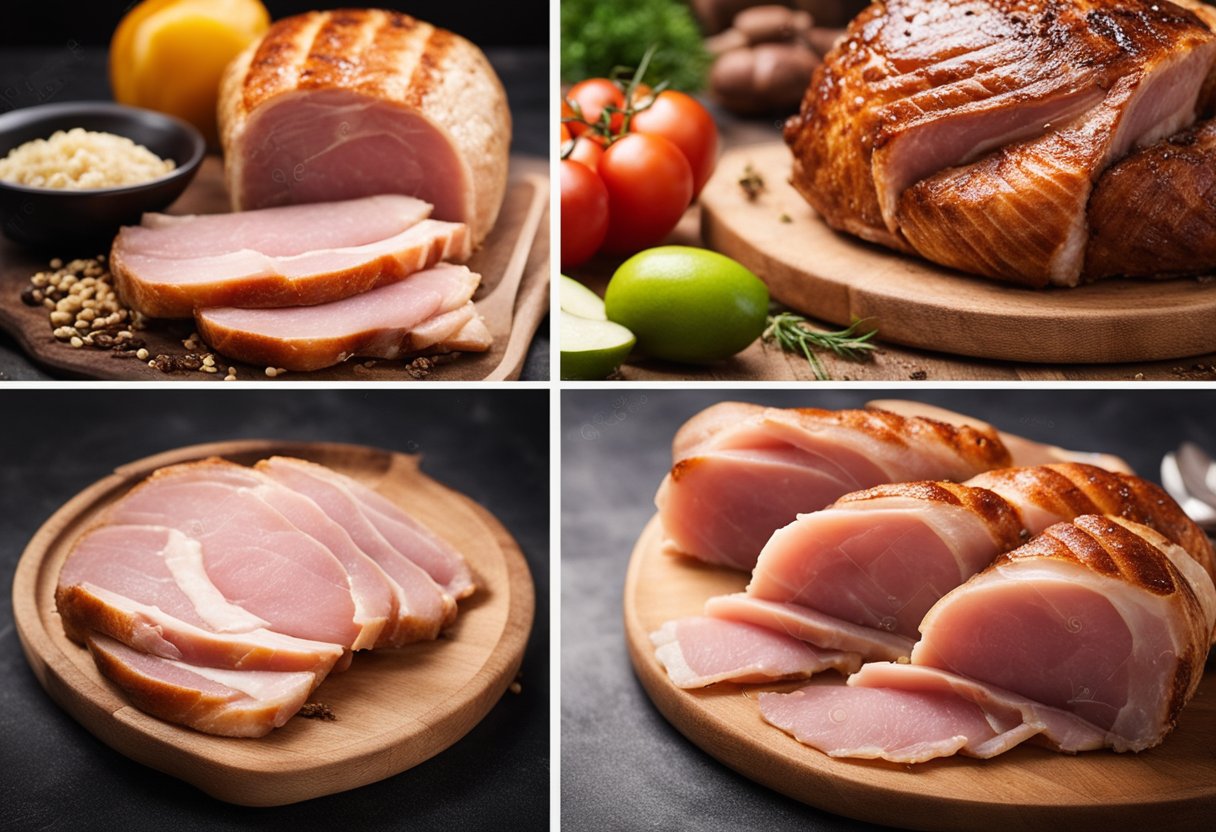
What part of the pig is ham?
Ham comes from the upper hind leg of the pig. It is a specific cut of meat that is taken from the pig’s rear leg, and it is always cured, which gives it a distinctive dark pink color.
What is ham made of?
Ham is made of pork, which is the meat that comes from domesticated pigs. However, it is cured with salt, brine, sodium nitrate, or other seasonings to give it its unique flavor and texture.
Is ham 100% pork?
Yes, ham is 100% pork. It is a specific cut of meat that comes from the pig’s hind leg, and it is always made from pork.
Does ham count as pork?
Yes, ham counts as pork. It is a type of pork that has been cured with salt, brine, sodium nitrate, or other seasonings to give it its unique flavor and texture.
Is ham just cured pork?
Yes, ham is just cured pork. It is a specific cut of meat that comes from the pig’s hind leg, and it is always cured with salt, brine, sodium nitrate, or other seasonings to give it its unique flavor and texture.
What part of the pig is pork chops?
Pork chops come from the loin of the pig, which is located between the shoulder and the hip. This area of the pig is known for its tender and flavorful meat, which makes it a popular choice for pork chops.


